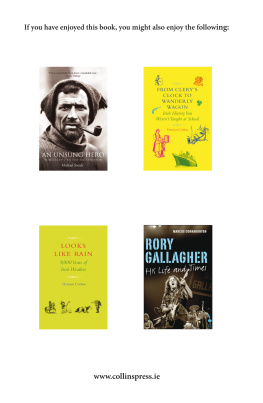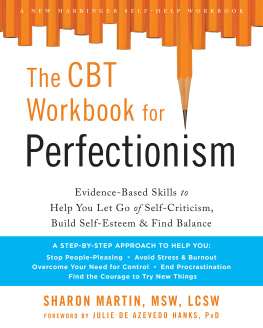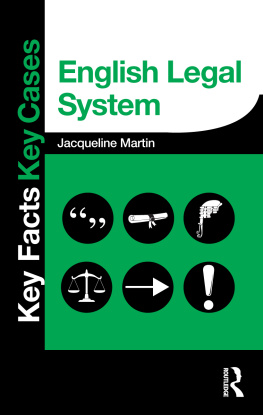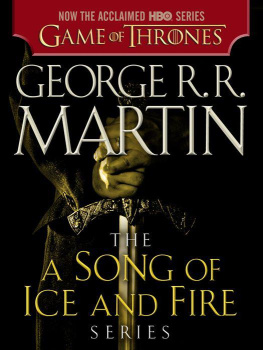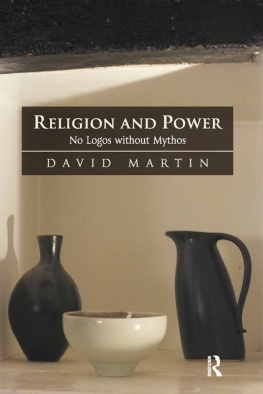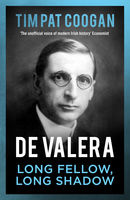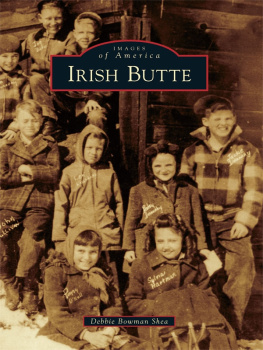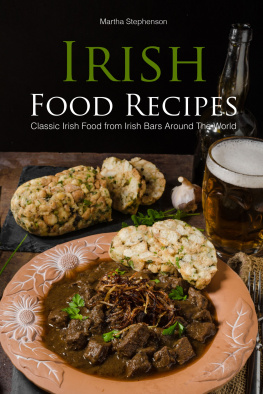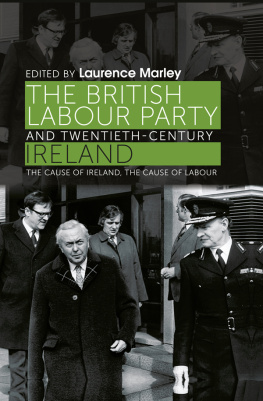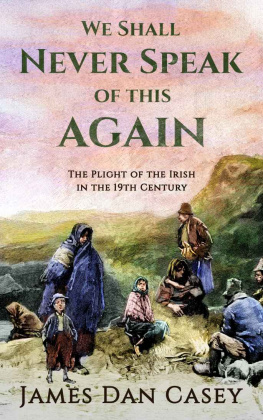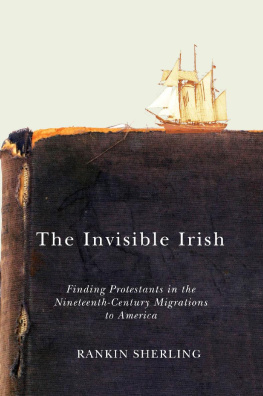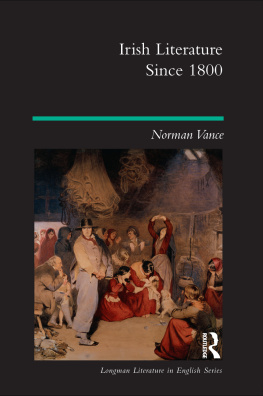
KEVIN MARTIN taught English and communications and cultural studies for twenty-five years. He is married with two children and lives near Westport, County Mayo. He loves pubs, travel and reading. This is his first book.
For my wife, Maria

F or better or worse, the pub has long been a focal point in Irish society. It is synonymous with the country; the proliferation of Irish pubs worldwide is a reflection of its iconic status. Some of the most famous pubs in the country are tourist attractions. A few privileged premises in Dublin also carry the lucrative mantle of literary pub. In Dublin Pub Life and Lore, Kevin C. Kearns defines a literary pub as one where a significant number of writers and intellectuals congregate on a regular basis to discuss matters of literature as well as every other matter under the sun. In An Age of Innocence, Brian Fallon points out that even though the literary pubs of Dublin only had a lifespan of roughly forty years, from the mid 1930s to the mid 1970s, they are as interwoven into the cultural, intellectual and social life of the period as Viennas coffee-houses are with its golden age, or the classic cafes and bars of Paris are with its great period from the years just before the first World War to the decade after the second.
The Dublin Literary Pub Crawl is a guided walk through some of the hostelries most associated with Irish men of letters, but is also a walk through Irelands history, proving (if proof were needed) how inextricably linked the Irish pub is with Irish life. It starts in The Duke, a pub just off Grafton Street, the citys premier shopping street. James Joyce was partial to a drink here, according to Colm Quilligan, the co-founder of the tour. In a darkened upstairs room he begins the nightly tour by telling some Joycean anecdotes. Nora Barnacle, Joyces eventual wife, was the only one who stuck to him. Joyce, Colm said, had the apparent ability to detect his wifes flatulence: I think I would know Noras farts anywhere. I think I could pick hers out in a roomful of farting women. After a rendition of The Waxies Dargle, a popular Dublin folk song often sung in pubs, Colm tells the story of The Duke.
Opened in 1882, it became one of the citys busiest pubs when Charles Bianconi, sometimes described as the founder of public transport in Ireland, opened his coach-travel business across the road, taking travellers to every town south of Carlow. Initially trading as The National Hotel and Tavern, it was a popular haunt for those awaiting their transport, who would play bagatelle and billiards. Winners were awarded tokens, exchangeable for drink. The pub was given a makeover in the 1890s and the Victorian faade has since remained largely untouched. From the early twentieth century it became a popular meeting place for writers and political activists, numbering James Joyce, James Stephens, Oliver St John Gogarty and Arthur Griffith among its guests. In the 1940s and 1950s it was frequented by the poet Patrick Kavanagh, his arch-enemy the writer Brendan Behan, and the renowned satirist Flann OBrien (also known as Myles Na gCopaleen and Brian ONolan). It was also a haunt of Michael Collins, leader of the Irish War of Independence (191921), who was engaged to Kitty Kiernan, a niece of the then owner. According to Colm, Collins occasionally used the snug to plan actions during the War of Independence. The pub has been owned by Tom Gilligan since 1988 his name is on the front but, as is common in Ireland, should you ask for Gilligans you may be met by a blank stare.
The tour moves on to ONeills in Suffolk Street, a pub with one of the most impressive snugs in the city. Snugs are a defining feature of many Irish pubs. Their name describes their character: small and separate, a place away from the rest of the pub. These self-contained units, usually to the side of the bar at the main entrances, were traditionally the preserve of women who were not accepted, or did not feel comfortable, in the main bar. They were also frequented by members of the clergy, police, members of the upper classes and the occasional lovers. While many snugs were torn out of pubs across Ireland in the name of modernisation, there are plenty of stunning examples remaining, particularly in Dublin and the other main cities. Typically, snugs have a wooden door with leaded glass above eye level so the occupants cannot be seen from outside. In some of the more salubrious establishments, like Ryans of Parkgate Street in Dublin, the top section of the door is mirrored to ensure further privacy. In many cases, snugs could even be locked from the inside to keep out unwelcome intruders. Historically, the seating tended to be rudimentary frequently little more than wooden benches. There was normally a bell to get the attention of the barman, and a hatch through which the drink was served. Over time, snugs became a normalised part of the pub and were frequented by people of all classes. In Britain, it was common for the prices to be higher in the snug, but this did not tend to be the case in Ireland.
ONeills is built on the exact location of the Vikings administrative headquarters in Ireland, the Thingmote (from the Norse thing, meaning people, and mote, meaning mound). Here, they sat on top of a 40-foot-high mound and promulgated laws for their newly acquired territory, held sporting contests and may have hosted ritual sacrifices. The Thingmote was levelled in 1681 on the orders of the Chief Justice, and the soil was used to raise the level of nearby Nassau Street to prevent flooding. In 1172, the same site was used by King Henry II to meet a group of Irish chiefs in an attempt to bring political stability to the country. The building housing the present-day ONeills was the residence of the Earl of Kildare in the early eighteenth century. The section of the pub now running into Church Lane was the location of a printing press in the late eighteenth century. In 1783, The Press, a republican newspaper established by Arthur OConnor one of the leading supporters of the nationalist Wolfe Tone and his United Irishmen was printed here. William Butler printed the Volunteers Journal, a paper censured in the British House of Commons for its nationalist views, in the same office in 1792. From 1755, the Coleman family used a part of the building to run a grocery, also selling wine and spirits. It was subsequently leased by the Hogan brothers, and bought by the ONeill family in 1927. The inside, a labyrinthine warren of nooks and crannies, has long been a popular drinking place for students of nearby Trinity College.
The Old Stand pub, named after a demolished part of the former national rugby ground on Lansdowne Road, is the next venue on the itinerary. Michael Collins also used the snug here to plan activities with members of the Irish Republican Army. Directly across the street is a building that once housed the Burton restaurant. It was to the Burton that Leopold Bloom the central character in James Joyces Ulysses first went on 16 June 1904 (now known as Bloomsday), but he was so sickened by the smell of boiling meat and mens beery piss as they sat slopping in their stews and pints that he continued on to the nearby Davy Byrnes. Joyce called Byrnes a moral pub because the proprietor was a teetotaller. Bloom famously stopped here for a Gorgonzola sandwich and a glass of wine:
Mr Bloom ate his strips of sandwich, fresh clean bread, with relish of disgust pungent mustard, the feety savour of green cheese. Sips of his wine soothed his palate. Not logwood that. Tastes fuller this weather with the chill off. Nice quiet bar. Nice piece of wood in that counter. Nicely planed. Like the way it curves there.
Next page
